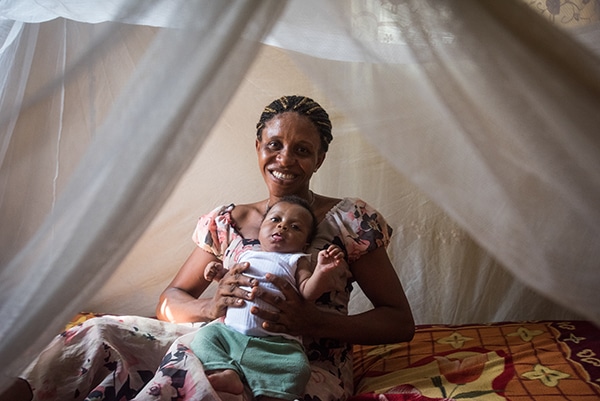When it comes to malaria, most of the existing social and behavior change tools and evidence come from research in areas where the mosquito-borne illness is endemic and where transmission is pretty high.
These tools help communities understand how individuals can protect themselves and their families from getting sick, often creating social norms about sleeping under insecticide-treated bed nets, seeking immediate care for a child’s fever, and taking preventive medicine in pregnancy. But what about in places where malaria transmission is low, where it has almost been eliminated, but remains a deadly threat to those who do get sick?
There remains much to learn about the strategies that will be most conducive to helping people adopt prevention behaviors in what are known as malaria elimination settings. In places where transmission is low, people might not feel they are at risk of getting sick, despite that fact that those who do become ill are at an increased risk of severe malaria and even death because they lack the kind of immunity that protects people where malaria is common. Many of them know a lot about the mosquito-borne disease, but knowledge, it appears, isn’t enough.
A new literature review from the Johns Hopkins Center for Communications, published in Malaria Journal, suggests that the body of research on the factors that influence malaria-related behaviors in low-transmission settings has not been systematic and often too narrow in scope.
The review highlights the need for more consistent, comprehensive measures of the factors that influence malaria-related behaviors and the importance of reaching subpopulations at higher risk of transmission in low-transmission contexts, the authors say.
“Malaria-related knowledge is generally high, even in settings of low transmission,” they write. “However, malaria-related knowledge in these settings is lower among sub-populations who experience the highest malaria risk. Programs and research aiming to improve malaria-related behaviors in these settings should work to better understand the psychosocial factors that have been positively associated with prevention and care-seeking behaviors, such as norms, perceived response efficacy, perceived self-efficacy, and interpersonal communication.”
Says CCP’s Michael Toso, one of the paper’s authors: “We know a lot about behaviors, even in elimination contexts, but this review highlights how much we do not now about what is behind those behaviors. Should we continue focusing on knowledge, perceived risk of malaria, or community norms when trying to motivate people to adopt safe behaviors in low-transmission contexts, or might we explore other possible determinants, like interpersonal communication with others about malaria? Are there other things we should be looking for?”
Despite significant gains over the past two decades, according to WHO, malaria continues to kill nearly 1,700 people each day, many of them children and most living in sub-Saharan Africa. Human behavior plays a fundamental role in the prevention, diagnosis and treatment of the disease.
In high-transmission settings, there are large, nationally representative surveys about malaria and behaviors which programs and governments have at their disposal to get a full understanding of the malaria landscape in individual countries. But every country is different and in places where transmission is closer to zero, nationally representative surveys might not be the right tool to reach and measure determinants of behavior in small sub-groups.
“We need to use the right instruments, and we need more people are using those instruments. And when we get that information, when we get those insights, we need to share them so that people can look at them and then parse them appropriately,” Toso says.
The review is just a first step toward developing new tools that could help people who live in areas where malaria is not top of mind. “If we are more consistent in measuring these determinants of behavior in low-transmissions settings,” he says. “If this happens, we will be able to better reach and encourage malaria prevention behaviors among those at higher risk and more vulnerable groups in areas where there is an opportunity to eliminate it.”
In fact, CCP has already taken steps in this direction, developing a new tool to measure determinants of behavior in low-transmission settings. The Malaria Behavior Survey for Low Transmission settings has been implemented in Zanzibar and is adapted from a larger cross-sectional household survey in Tanzania.
“Understanding psychosocial determinants of malaria behaviours in low-transmission settings: a scoping review” was written by Albert Casella, April Monroe, Michael Toso, Gabrielle Hunter, Carol Underwood, Ruchita Pillai, Jayme Hughes, Lynn M. Van Lith, Shelby Cash, Jimee Hwang and Stella Babalola.
This scoping review, through CCP-led Breakthrough ACTION, is funded by the Global Health Bureau of the United States Agency for International Development (USAID) and the U.S. President’s Malaria Initiative (PMI) under the terms of Cooperative Agreement No. AID-OAA-A-17-00017.





